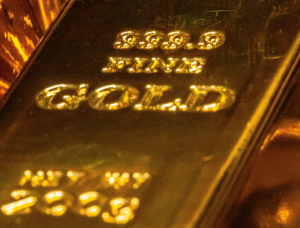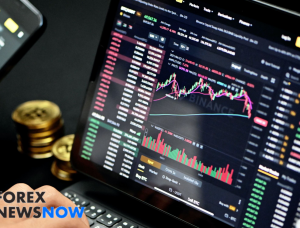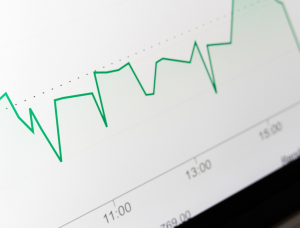
Gold prices are closely linked to the value of the US dollar, which has been experiencing fluctuations in recent years due to various economic and political factors. The price of gold tends to rise when the dollar weakens, as investors seek a safe-haven investment in times of uncertainty. Conversely, a strong dollar tends to suppress gold prices, as investors flock to the currency instead.
However, in recent times, gold prices have remained stable despite fluctuations in the dollar, leaving investors wondering why. This article will explore the relationship between gold prices and the US dollar, the factors affecting their connection, and why gold prices have paused in recent times.
Gold Price Dependence on USD Price
Gold prices and the US dollar have a long-standing relationship that has shaped global markets for decades. Given its status as the primary reserve currency of the world, the US dollar exerts a considerable influence on global trade and finance. Meanwhile, gold is considered a safe-haven investment in times of economic uncertainty.
The value of gold is often affected by changes in the US dollar’s worth. If the US dollar loses value, gold prices typically increase in response. This is because investors see gold as a safe-haven investment that can protect their wealth during times of uncertainty. Conversely, when the US dollar strengthens, the price of gold tends to fall, as investors flock to the currency instead.
One example of this occurred in 2020, when the COVID-19 pandemic caused global markets to plummet. The US dollar initially strengthened as investors flocked to the currency in search of stability. However, as the pandemic continued to wreak havoc on the global economy, the value of the US dollar began to weaken.
Another example of the relationship between gold prices and the US dollar occurred during the 2008 financial crisis. As the crisis unfolded, the value of the US dollar began to weaken as investors lost faith in the US economy.
As a result of economic uncertainty, investors tend to seek protection by investing in gold, causing a significant increase in its value. Nonetheless, the correlation between gold prices and the US dollar’s worth is not always a simple one.
There are other factors that can impact the connection between the two, such as inflation rates, geopolitical tensions, and central bank policies. For example, in 2018, the US dollar strengthened as the Federal Reserve raised interest rates. This led to a decline in gold prices, despite the weakening of other currencies such as the euro and the pound.
In recent times, gold prices have remained stable despite fluctuations in the US dollar. There are several reasons behind this, including but not limited to, the COVID-19 pandemic, political conflicts, and monetary policies adopted by central banks. For example, the US Federal Reserve has signalled that it will maintain low-interest rates for the foreseeable future, which has led to a decline in the value of the US dollar. However, this has not led to a corresponding rise in gold prices, as investors remain cautious amid the ongoing economic uncertainty.
In conclusion, the relationship between gold prices and the US dollar is complex and multifaceted. While fluctuations in the value of the US dollar can have a significant impact on gold prices, other factors such as inflation rates, geopolitical tensions, and central bank policies can also play a role. Understanding the connection between these two important economic indicators is crucial for investors looking to make informed decisions in the global marketplace.
Current Situation for Gold: Prices are Paused
Gold prices have been hovering near all-time highs, reflecting its reputation as a safe-haven investment, especially during times of economic uncertainty. This trend has been underpinned by the weakening of the US dollar and dipping Treasury yields. The value of gold tends to be influenced by interest rate changes in other highly traded assets, as it doesn’t offer any return other than capital gains or losses.
Nonetheless, the value of gold has remained steady at approximately US$ 2,000 per ounce, despite the drop in real yields in the US. Real yields are calculated by subtracting market-priced inflation from the nominal yield on the Treasury bond for the same term. This indicates a somewhat puzzling scenario, given that gold is typically seen as an inflation hedge and lower yields usually support the value of the precious metal.
Adding to the somewhat curious nature of the current market, volatility has remained relatively subdued, with the GVZ index, which measures gold’s volatility, remaining below 18. This can be viewed as a sign of the market’s cautiousness and its inability to take a decisive direction.
Looking ahead, the market will focus on US GDP and core PCE data, which will be released on Thursday. However, the upcoming Federal Open Market Committee (FOMC) meeting next week is likely to serve as a catalyst for a major shift in gold prices. Investors will be paying close attention to any hints about the Federal Reserve’s monetary policy, as it could have a significant impact on the value of the US dollar and, in turn, gold prices. In summary, the current state of the gold market presents a challenging puzzle for investors, and the FOMC meeting next week could provide some much-needed clarity.
- SEO Powered Content & PR Distribution. Get Amplified Today.
- PlatoAiStream. Web3 Data Intelligence. Knowledge Amplified. Access Here.
- Minting the Future w Adryenn Ashley. Access Here.
- Source: https://www.forexnewsnow.com/forex-analysis/commodity/the-curious-case-of-stable-gold-prices-despite-fluctuations-in-the-us-dollar-an-analysis/
- :has
- :is
- :not
- 000
- 2008 Financial Crisis
- 2018
- 2020
- a
- About
- adopted
- affecting
- ahead
- all-time highs
- also
- always
- Amid
- an
- analysis
- and
- any
- approximately
- ARE
- article
- AS
- Assets
- At
- attention
- Bank
- Banks
- BE
- because
- been
- began
- behind
- below
- between
- bond
- but
- by
- calculated
- CAN
- capital
- case
- Catalyst
- caused
- causing
- cautious
- central
- Central Bank
- Central Bank Policies
- Central Banks
- challenging
- Changes
- clarity
- Close
- closely
- committee
- complex
- conclusion
- connection
- considerable
- considered
- continued
- Core
- Correlation
- Corresponding
- could
- COVID-19
- COVID-19 pandemic
- crisis
- crucial
- curious
- currencies
- Currency
- Current
- Current state
- data
- decades
- decisions
- decisive
- Decline
- dependence
- Despite
- direction
- Doesn’t
- Dollar
- Drop
- due
- during
- Economic
- economic indicators
- economic uncertainty
- economy
- especially
- Euro
- example
- experiencing
- explore
- factors
- faith
- Fall
- Federal
- Federal Open Market Committee
- federal reserve
- Federal Reserve’s
- finance
- financial
- financial crisis
- fluctuations
- Focus
- FOMC
- For
- For Investors
- foreseeable
- from
- future
- Gains
- GDP
- geopolitical
- given
- Global
- Global economy
- global markets
- global trade
- Gold
- Gold Prices
- Have
- hedge
- highly
- Highs
- hints
- However
- HTTPS
- if
- Impact
- important
- in
- In other
- inability
- Including
- Increase
- index
- indicates
- Indicators
- inflation
- Inflation hedge
- Inflation Rates
- influence
- influenced
- informed
- initially
- instead
- interest
- INTEREST RATE
- Interest Rates
- investing
- investment
- Investors
- IT
- ITS
- leaving
- Led
- likely
- Limited
- linked
- long-standing
- looking
- Loses
- losses
- lost
- maintain
- major
- make
- Market
- marketplace
- Markets
- Meanwhile
- measures
- meeting
- metal
- Monetary
- Monetary Policy
- much-needed
- multifaceted
- Nature
- Near
- next
- next week
- occurred
- of
- offer
- often
- on
- ONE
- ongoing
- open
- or
- Other
- pandemic
- paying
- pce
- plato
- Plato Data Intelligence
- PlatoData
- Play
- Plummet
- policies
- policy
- political
- pound
- Precious
- presents
- price
- Prices
- primary
- protect
- protection
- provide
- puzzle
- raised
- Rate
- Rates
- real
- reasons
- recent
- relationship
- relatively
- released
- remain
- remained
- remaining
- reputation
- Reserve
- Reserve Currency
- reserves
- response
- result
- return
- Rise
- Role
- same
- scenario
- Search
- see
- Seek
- seen
- serve
- several
- shaped
- shift
- sign
- significant
- Simple
- situation
- some
- somewhat
- Stability
- stable
- State
- Status
- steady
- Strengthens
- strong
- such
- SUMMARY
- support
- Take
- than
- that
- The
- The US Federal Reserve
- the world
- their
- There.
- These
- this
- times
- to
- trade
- traded
- treasury
- Treasury yields
- Trend
- TURN
- typically
- Uncertainty
- understanding
- upcoming
- us
- US Dollar
- US economy
- US Federal
- us federal reserve
- US GDP
- USD
- usually
- value
- various
- Volatility
- Wealth
- week
- when
- which
- while
- why
- will
- with
- wondering
- world
- worth
- years
- Yield
- yields
- zephyrnet










